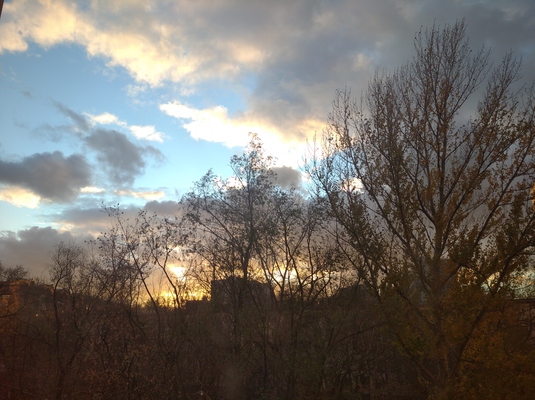
I am a trainer and an assistant director of studies. I spend a relatively large part of my professional life sitting in the back of classrooms, observing. I love it.
Not that anyone asked (hahaha, here is one clumsy blogger, at your service. After all, one should start with ‘Many of you have been asking me…’ or ‘I’ve received many questions about…’ I DID NOT) but if I were to give one piece of advice to all the YL and VYL teachers (or maybe not only to them), it would be this: BREATHE.
If I were given a chance to use more words, I would say:
‘Breathe! Pause! Calm down! We care about the efficient use of the lesson time but nobody is in a hurry, nobody is rushing to catch a train. There is time. You will be doing a great service to yourself and to your kids. I promise. Inhale. Exhale. Repeat!’
What do I mean? Here are five ideas.

Instructions
Going slow is absolutely crucial while giving instructions.
Not always but frequently enough our primary and pre-primary students will be doing something in class for the first time in their lives, without any metaphors whatsoever. It is quite likely that we, the teachers are the first ones to introduce a boardgame to them, a role-play, a game with a dice, a pair-work activity, a mingle, the game of pelmanism or a project. Our students might behave like they have never done it before because, very often, they really haven’t. Or they haven’t done it in a foreign language to practise vocabulary or grammar. It really IS their first time! Our classroom IS full of Gagarins, Columbuses or Cabrals (or whoever is your favourite First-Timer Metaphor).
That is why the instructions we give have to be not only graded and accompanied by gestures and (ideally) by modelling but also paced. With the teacher taking baby steps, pausing (and breathing) for all the students to catch up. Before anyone is allowed to take the next step forward.
Taking this one breath in-between the sentences will really make a huge difference. Let’s breathe then!

A listening task, as in: any listening task
Listening tasks for young learners are another example how pausing can make the world go round and in the right way, too. This tiny (and, really, the most insignificant) movement of the teacher’s finger pressing PAUSE on the CD player / the telephone / the computer can be the factor that decides about the activity becoming a success or a failure. Something that amazes me every single time I see it in action.
PAUSE and the kids have a chance to hear what they are supposed to hear, circle what they are supposed to circle and get ready for the next bit. PAUSE and the teacher has a real chance to monitor while in-task. PAUSE and if there have been any glitches, now is the time to fix things and to save the rest of the activity.
DON’T and they miss the first example because they are still not quite sure what they are doing. Then they miss the second example because the breaks between the pieces of the recording are too short and there are no numbers or beeps to help their focus. DON’T and, inevitably, they miss the third one, too, because they missed the previous two and everything becomes just a mesh of sounds. DON’T and you have no chance to monitor or to give feedback, Although, really, it is NOT a mini-test that the kids should pass. It is only an opportunity to develop their listening comprehension skills. It is ok to help, to support and to guide. Unless it is a real test.
So maybe it is a good idea, to pause and to breathe?

Questions and answers
Here is a question: Do you know how long is the average ‘wait time’ aka the time that elapses between the moment a teacher asks a question and the moment a student is expected to answer it?
Well, fasten your seatbelts because it is quite likely that what I am about to tell you will be a bit of a shock.
Apparently, we, teachers wait as long as long as 1.5 seconds at maximum and most of the time even less than that. One second and a half. Which means that we don’t really wait at all. Either student A knows that answer that we want to get and they provide it or they don’t (more likely) and we move on to student B or C until we find what we want or we just answer the question ourselves.
Extending that wait time can have a huge impact on students’ learning, engagement and, possibly, also on their confidence because they will be given a chance and time to rise and shine. And don’t worry. By extending here I mean ‘waiting three (3) seconds‘, not the whole eternity. 3 seconds aka one inhale – exhale set. Breathe!

Just look at the picture first
This particular issue is going to make an entry here for one and very specific reason: our coursebooks and all the materials for YL are full of great visual material which, sadly, is not given all the attention it deserves.
The first question that I often I ask my trainees during the post-observation feedback session while discussing visuals, photographs, cartoons and drawings is: Why not spend more time on talking about the picture? There are so many things that you can do with a picture! (If you are not sure what these are, have a look at the earlier posts, here and here).
Once we establish that these do indeed have a lot of potential that needs to be tapped into, the question arises of how to do it. And this is how we get back to breathing.
Whenever students are shown a new picture, one that they have never seen before, they need to be given time to take it in, with its narration and all the details. It is more important for the younger learners, since their cognitive skills are still developing but it can be beneficial for the learners of all age groups and levels. If you are in doubt, just have a look at how visuals are dealt with during the speaking part of different Cambridge exams, from Movers, through PET to CAE, although with the higher levels it is hidden under the lengthy instructions from the interlocutor during which the candidates are allowed to look at the photographs they are to describe.
Step 1: instructions, Step 2: one deep breath while the kids are getting ready. Thinking time is precious and it extends on all the activities, picture-related or not.

Classroom management
Last but not least, the main destroyer of the peaceful flow of a VYL and YL lesson makes an appearance, too – the unwanted behaviour, in all its shapes and sizes.
The option of ‘doing nothing’ is out of the question, it is the teacher’s job to react but perhaps it is worth considering whether the immediate reaction is the best solution. After all, there might be some situations in which everyone would benefit from the teacher taking a deep breath and using this second or two to calm down, to consider the options and to see the situation from the little people’s point of view? Maybe the situation was not that serious? Maybe it was just a silly joke? Maybe just an unfortunate mistake? Maybe the reaction does not need to involve the headmaster, the parents and the armoured infantry? At least in some cases. This tiny little pause might help establish that. The thinking time for the teacher. And then – back to action!

Happy teaching!